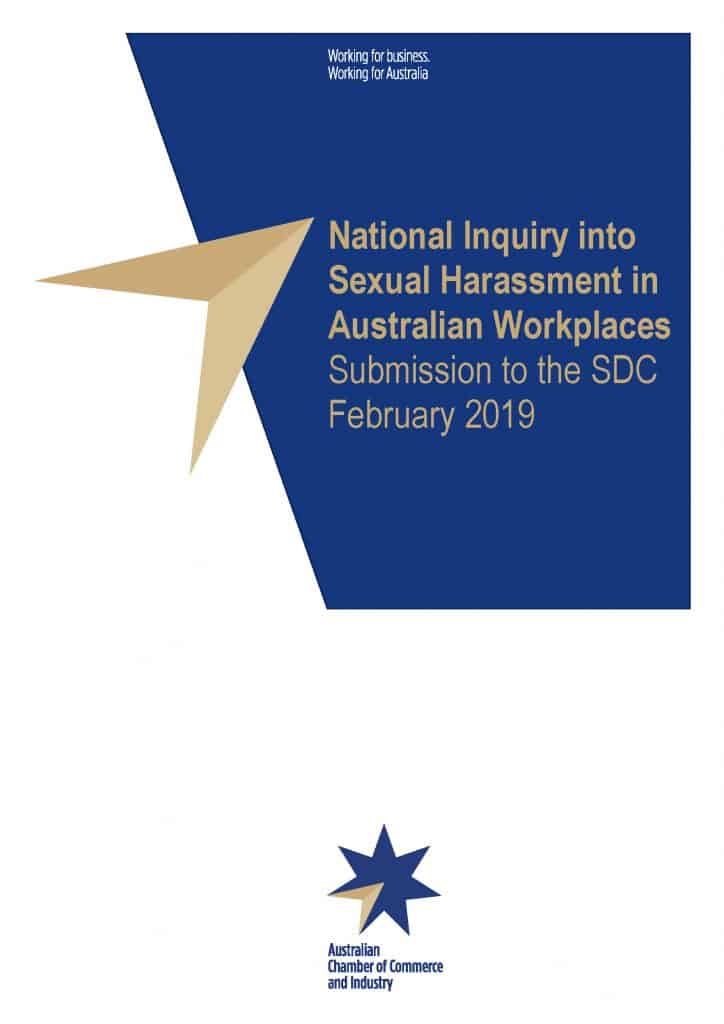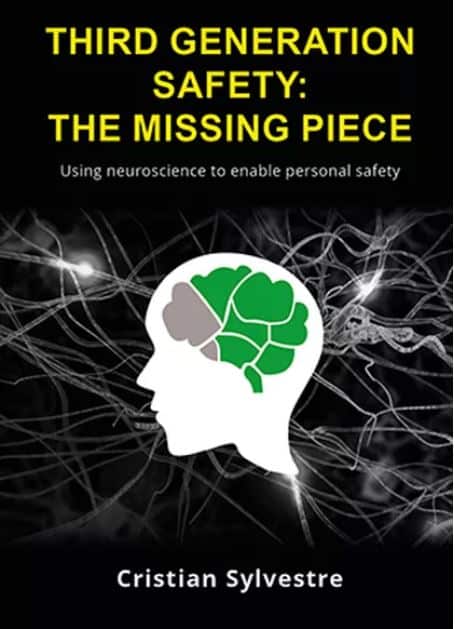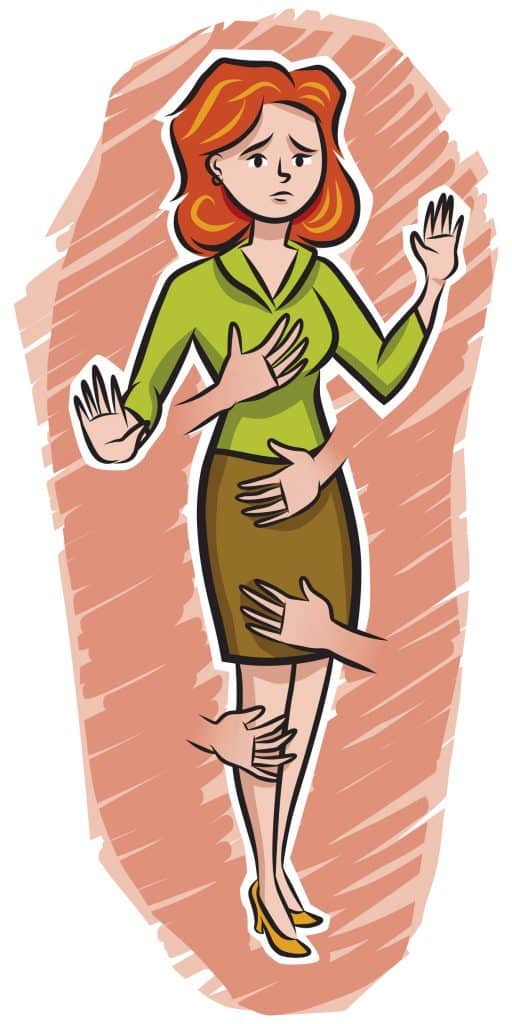Two business associations have released the submissions they provided to Australia’s National Inquiry into Sexual Harassment in Australian Workplaces – the Australian Chamber of Commerce and Industry (ACCI) and the Australian Industry Group (AiG). These submissions have been eagerly anticipated as these two groups are politically influential.

ACCI has based its submission on 13 “principles”:
- Employers oppose sexual harassment
- Sexual harassment is not good business
- More Australians need to be able to recognise sexual harassment
- We need to improve the attitudes Australians bring to work
- The law needs to support employers in turning values into action
- We need to recognise/reward learning and change
- Individuals must be made more accountable for their own behaviour
- Greater effectiveness does not demand more law
- Regulation needs to be smart, simple, clear and balanced to be effective
- Jurisdictional overlap / repetition detracts from effectiveness
- Businesses have differing capacities and cultures
- Sexual harassment can be challenging to manage
- This is a moving target; new sexual harassment risks are emerging
Each one of these sound positive but can be argued over. For instance “sexual harassment can be challenging to manage”. This is less of a principle than a reason, or even an excuse. Sexual harassment is complex to manage as it is not just about poor relationships, it involves a sexual element which involves power and disrespect; power that is sometimes misinterpreted as leadership or part of a manager’s entitlement.


